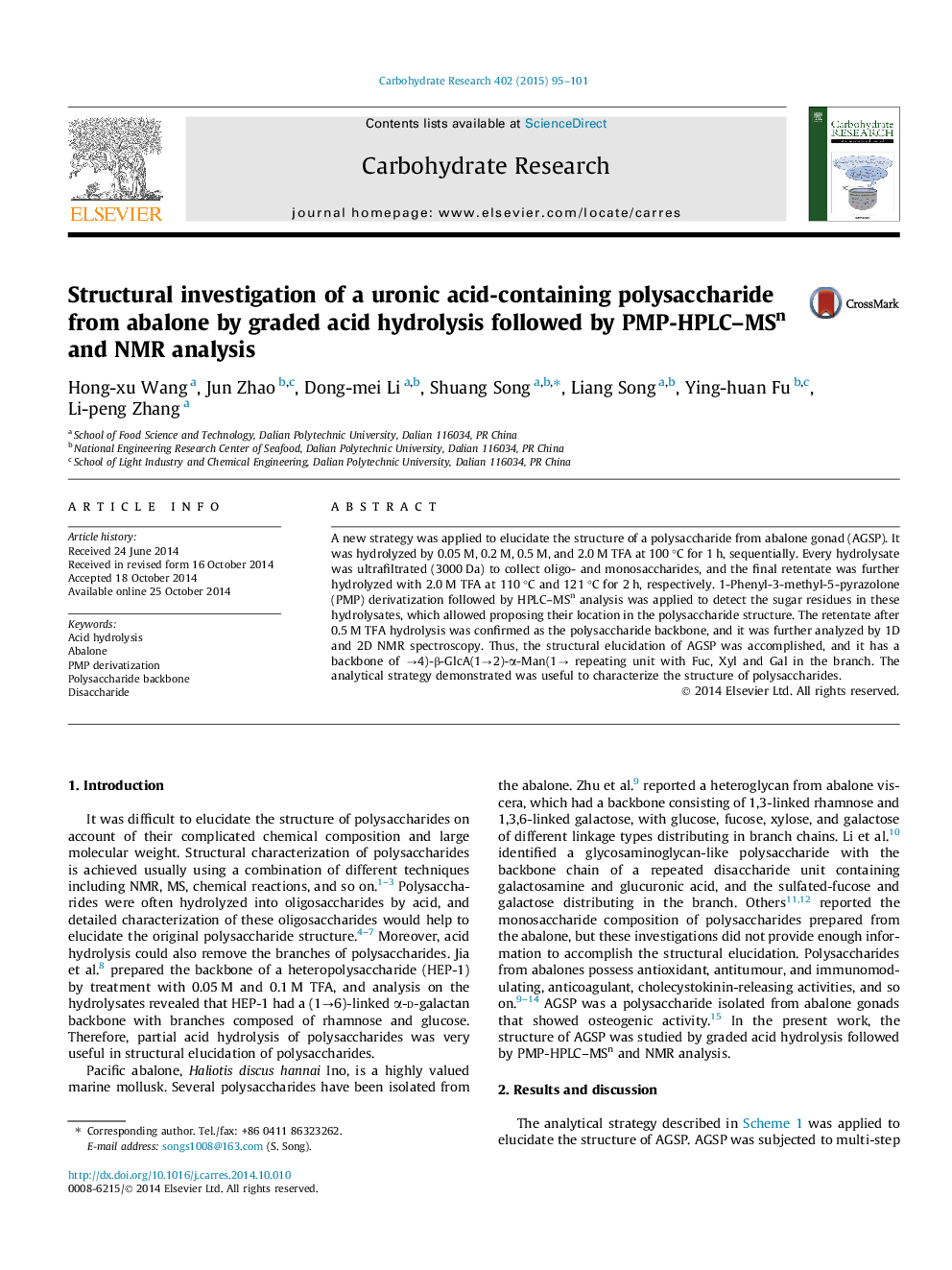| Article ID | Journal | Published Year | Pages | File Type |
|---|---|---|---|---|
| 1387780 | Carbohydrate Research | 2015 | 7 Pages |
•A new strategy was demonstrated to characterize a polysaccharide (AGSP).•The composition was analyzed by graded acid hydrolysis followed by PMP-HPLC–MSn.•The backbone of AGSP was elucidated by 1D and 2D NMR spectra.•The backbone consisted of repeating disaccharide units of →4)-β-GlcA(1→2)-α-Man(1→.•Fuc, Xyl, and Gal were in the branch chains.
A new strategy was applied to elucidate the structure of a polysaccharide from abalone gonad (AGSP). It was hydrolyzed by 0.05 M, 0.2 M, 0.5 M, and 2.0 M TFA at 100 °C for 1 h, sequentially. Every hydrolysate was ultrafiltrated (3000 Da) to collect oligo- and monosaccharides, and the final retentate was further hydrolyzed with 2.0 M TFA at 110 °C and 121 °C for 2 h, respectively. 1-Phenyl-3-methyl-5-pyrazolone (PMP) derivatization followed by HPLC–MSn analysis was applied to detect the sugar residues in these hydrolysates, which allowed proposing their location in the polysaccharide structure. The retentate after 0.5 M TFA hydrolysis was confirmed as the polysaccharide backbone, and it was further analyzed by 1D and 2D NMR spectroscopy. Thus, the structural elucidation of AGSP was accomplished, and it has a backbone of →4)-β-GlcA(1→2)-α-Man(1→ repeating unit with Fuc, Xyl and Gal in the branch. The analytical strategy demonstrated was useful to characterize the structure of polysaccharides.
Graphical abstractFigure optionsDownload full-size imageDownload as PowerPoint slide
